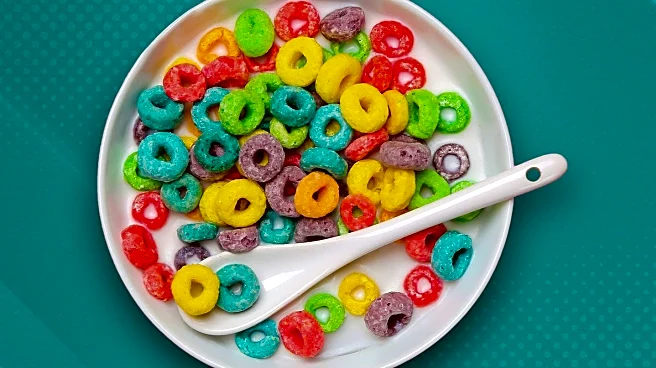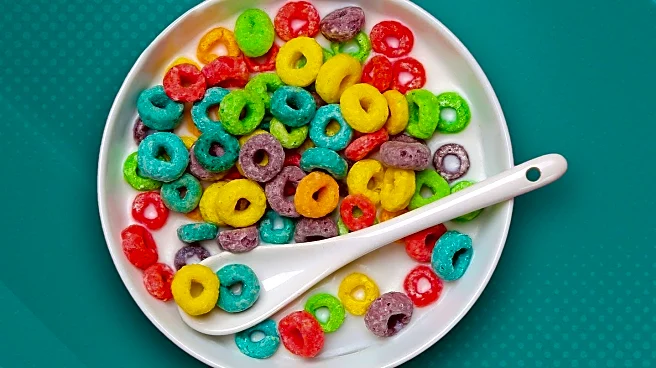What is the story about?
What's Happening?
A study conducted by Consumer Reports has found that breakfast cereals marketed to children aged 5 to 12 have become sweeter, saltier, and less nutritious over the years. The study analyzed cereals launched between 2010 and 2023, noting a rise in sugar, fat, and sodium content, while protein and fiber levels have decreased. A typical serving of these cereals contains nearly three teaspoons of sugar, which is 45% of the daily added sugar limit recommended by the American Heart Association for children. Consumer Reports offers guidance on selecting healthier cereals, emphasizing the importance of checking ingredient lists and choosing products with whole grains and minimal added sugar.
Why It's Important?
This study is crucial as it highlights the nutritional concerns associated with children's breakfast cereals, which can impact children's health and dietary habits. High sugar intake is linked to various health issues, including obesity and diabetes, making it essential for parents to choose cereals wisely. The study's findings may prompt consumers to demand healthier options, potentially influencing cereal manufacturers to reformulate their products to meet nutritional standards.
What's Next?
Parents are advised to mix sugary cereals with lower-sugar, higher-fiber alternatives to improve nutritional value. Adding low-fat dairy or soy milk can increase protein content, helping to stabilize blood sugar levels. Consumer Reports recommends measuring cereal portions to better manage sugar, calorie, and sodium intake. These practices can lead to healthier eating habits and may encourage cereal producers to offer more nutritious options.
AI Generated Content
Do you find this article useful?















